Does your dog stop dead in his tracks while walking?
Many pooch parents deal with this canine calamity at some point, and while it is pretty common, it can be difficult to work through if you don’t know what to do.
While this is undoubtedly frustrating, it’s also kinda a funny sight (especially when it isn’t your hound holding up the sidewalk). Thankfully, we’ll share how to address this situation below so that you can help your stubborn sweetheart get his steps in.
My Dog Stops Walking and Then Won’t Move: Key Takeaways
- Dogs may stop walking and refuse to move for a variety of reasons. Fortunately, you can usually correct this issue by addressing the underlying cause for the behavior and assessing why your dog is anti-walk.
- A few of the most common reasons include fatigue, pain, or simply a lack of experience walking on a leash. Some dogs also stop walking because they don’t want to go back home yet!
- No matter the reason your dog is stopping during walks, you’ll need to remain patient. Yelling at your dog, trying to drag him, or getting frustrated with him will likely exacerbate the problem.
12 Reasons Your Dog Stops Walking (and What to Do About It)
Fido may be freeze during your walks for a variety of reasons.
Here are some of the most common scenarios that may lead your dog to stop walking and what you can do about it.
1. Your dog is in pain.
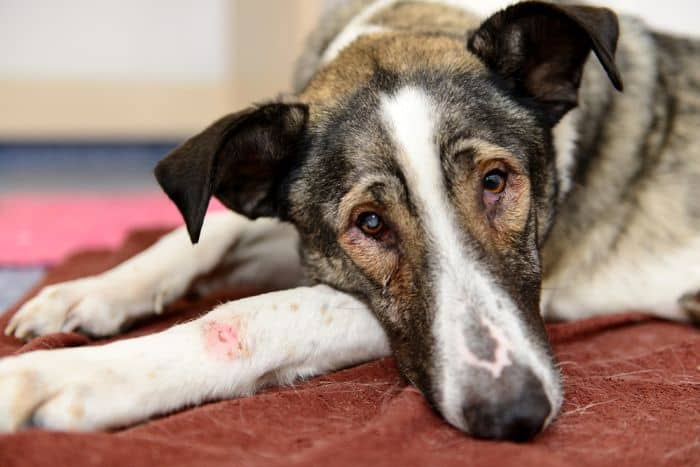
It’s possible that your furry friend is stopping your walks because he’s experiencing long-term pain — particularly joint pain, caused by conditions like arthritis or hip dysplasia.
So, it is important to learn to recognize the signs of joint pain in dogs. For example, you may notice your dog trying to put less weight on the affected area while stopping, or letting out a whimper or yelp shortly before planting himself on the sidewalk.
If your dog is stopping because he’s in pain, you’ll need to have him examined by a veterinarian to identify the problem and determine a solution. This could include things like medications, physical therapy, or potential surgery.
2. Your dog has suffered an injury.
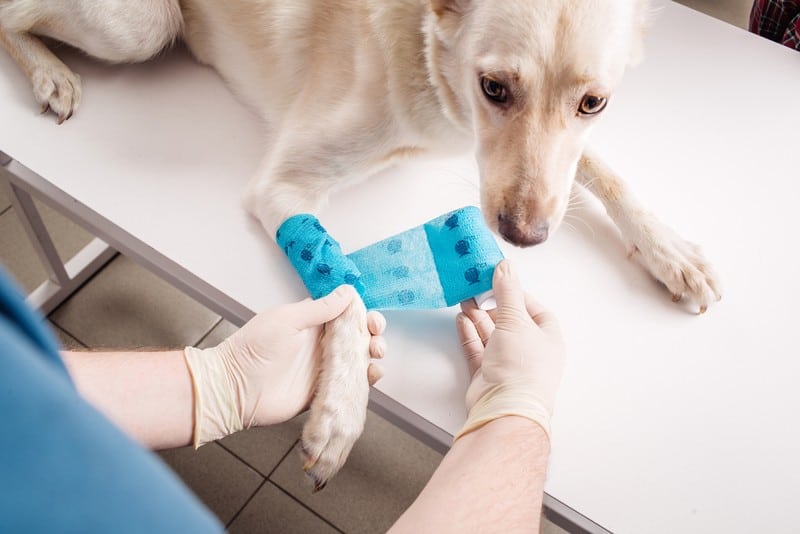
Acute injuries could also cause your furry friend to stop walking during your strolls. This could include minor injuries, such as an injured nail or paw pad, or it could be the result of something more serious.
In any event, you’ll want to start by checking your dog’s paws and legs for any obvious scrapes or cuts. Take notes and pictures of any injury you do see, implement basic first-aid procedures (you do have a canine first-aid kit on hand, right?), and proceed to the veterinarian to further address the wound(s).
If the wound is serious, you probably want to end the walk and have a friend come pick you both up to avoid making the injury worse.
3. Your dog is afraid of something.

Many dogs, especially young ones, may refuse to move because they are afraid of something outside. This is especially common for puppies going through fear periods and dogs who are inexperienced or unsure about the environment.
Adult dogs previously comfortable with walking might also react in this way when exploring an unfamiliar area or on a new route, especially when they lean more anxious or fearful in general. Other dogs may have suffered from a traumatic incident, such as getting attacked by an off-leash dog or being hit by a car, which has made them warier of the outdoors.
To address this issue, try to identify what exactly it is that’s frightening your doggo. This could be anything from a large dog in the area to strange sounds, trash cans, signs, or odors you may not even have noticed.
After figuring out what is frightening your poor pooch, you can work on desensitizing your dog to the trigger (assuming it is safe to do so) and building up your dog’s confidence level. Be patient and take things nice and slow, trying not to go too far outside your dog’s comfort zone.
If your dog is hesitant to even leave the house, practice just getting your dog to take a few steps outside, and then let him return indoors where he feels safe.
From there, you can implement some strategies for reducing your dog’s anxiety on walks, such as walking back and forth across the street directly in front of your house, or wherever the dog feels most comfortable, until your pooch can build up the confidence to try streets that are further from home.
Also, if your dog has a furry friend he trusts, it might also be helpful to schedule doggie dates where both dogs walk together. This way, the confident dog can help your pooch grow into his own by setting a good example.
4. Your dog doesn’t have a lot of leash walking experience.
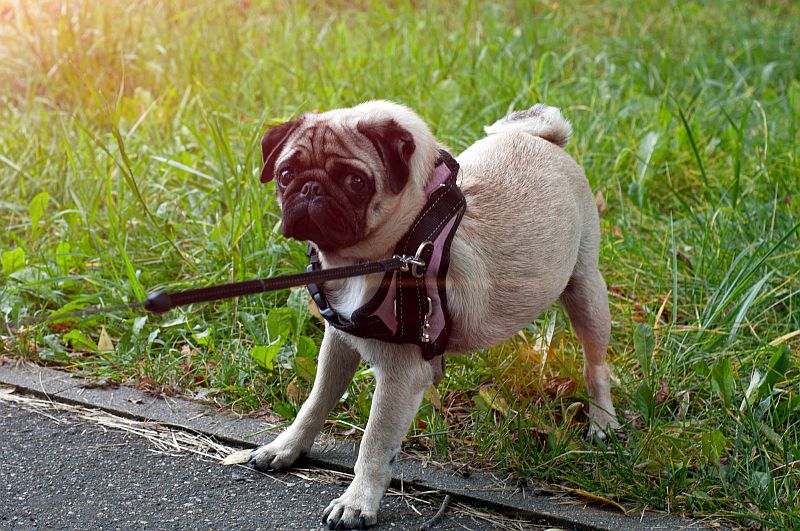
It’s possible that your dog simply isn’t used to walking on a leash, or going on walks at all. This is why it’s important to understand your dog’s history, especially if he is an adopted furry friend.
Keep in mind that, for dogs who have never walked on a leash before, the experience can be overwhelming and even frightening. Try to go slowly, introducing your dog to one piece of equipment at a time and handing out treats as your dog simply sniffs and investigates the gear. From there, snapping the leash on, but just for a few seconds at a time, all repeated with treats and praise.
Once your dog is a bit more familiar with the gear, you can build your canine’s confidence by practicing leash walking inside your own home. This will give your dog plenty of time to acclimate to the leash in a space he knows and loves.
From there, you can build up to a fenced-in backyard, or even a closed dog run. Take things at your dog’s own pace so that you can strengthen your bond along with your dog’s walking skills without breaking trust.
5. Your dog is feeling overwhelmed.
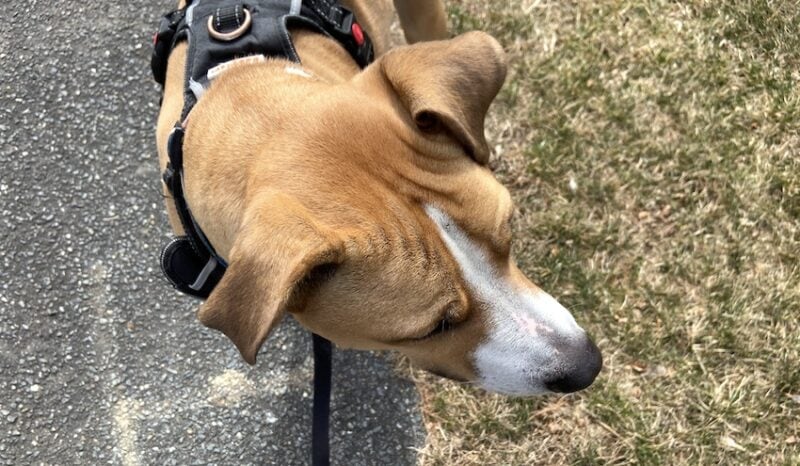
While an overwhelmed dog can overlap with a fearful dog, they can also be entirely separate issues.
When I first adopted my rescue dog Remy, a normal 20-minute walking path took us 40 minutes to get through because Remy would constantly freeze. Every few steps Remy would halt his movement and survey the area. This behavior used to irritate me so much, but eventually, I learned that Remy’s constant freezing was a sign of him feeling overwhelmed.
Remy isn’t really a fearful dog. Nothing really scares him. But, he is highly sensitive and can become overwhelmed and over-aroused very quickly.
Remy was likely not socialized as a pup, and was probably kept chained up in a small yard or patio area, because even small, short walks were incredibly overstimulating to him.
On every walk, Remy was on constant high alert. He felt completely overwhelmed by the sights and smells of the outdoors that he rarely experienced before. His extreme sensitivity and arousal issues also led to some other really bad behavior, where he would jump and bite at the leash before moving on to jumping and biting my body and my clothing during walks.
Issues involving overstimulation can be challenging because, in an over-aroused state, your dog isn’t able to learn or listen to cues. No amount of correction or punishment will help because your dog is completely over-aroused, over his threshold, and is not in a learning state of mind.
The best thing you can do is stay calm and help your dog relax or redirect his arousal to a more appropriate outlet. So, for example, you could consider bringing a toy with you on a walk and throw it out if your dog gets bitey. Or, do a treat scatter onto the ground to help your dog refocus himself and calm down a bit (this is what I resorted to often when Remy became extremely over-aroused).
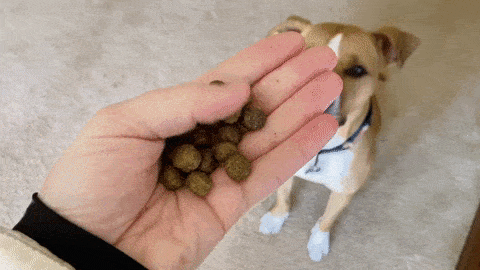
Over time, Remy was able to relax more outdoors and stopped the constant freezing, allowing us to speed up our walks. Even highly sensitive dogs like Remy can usually become desensitized to their environment, allowing them to chill out a bit.
You can help your dog relax and stay calm by encouraging your dog to focus on you. Mark and reward for eye contact, consider teaching a “focus” cue, and keep your dog engaged with you on the walk by practicing loose leash walking games that encourage your dog to pay attention to you.
Just make sure to go easy on your dog! Even if his behavior is frustrating, he isn’t purposefully being a pain. He’s just totally overwhelmed and can’t cope. But with consistency, patience, and practice, he’ll adjust.
6. Your dog is tired or fatigued.
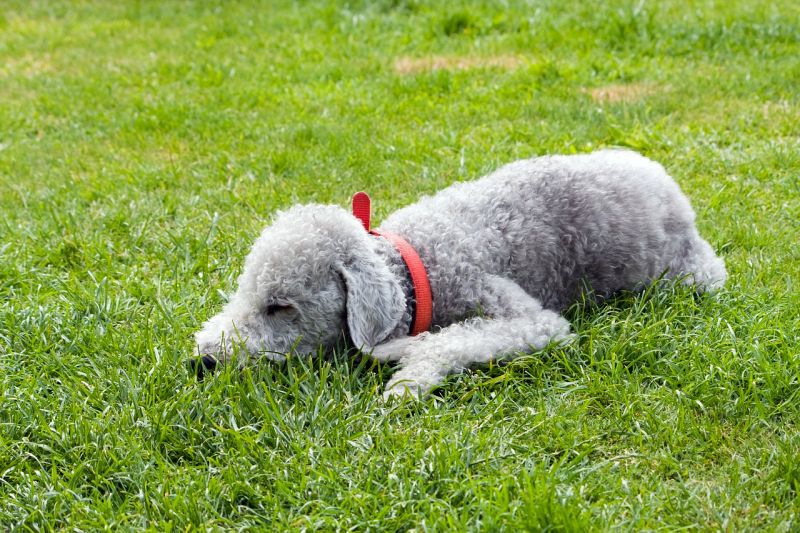
Not all dogs are designed to be running buddies or cover miles and miles at a time, and it is possible that your dog is simply fatigued by the duration or frequency of your walks.
So, try to look for some of the signs that your doggo is tired, such as excessive panting, a slower-than-usual pace, and unenthused body language. Also, be sure you speak with your veterinarian regarding the recommended amount of exercise for your four-footer.
If your dog is fatigued but needs to get more exercise on a regular basis, it may be helpful to try taking several small walks instead of a few long, strenuous walks. You can also consider getting your dog some indoor exercise to supplement your walks.
Just be sure you don’t push your dog’s limits, especially in extremely hot weather.
7. Your pooch isn’t happy about the weather.
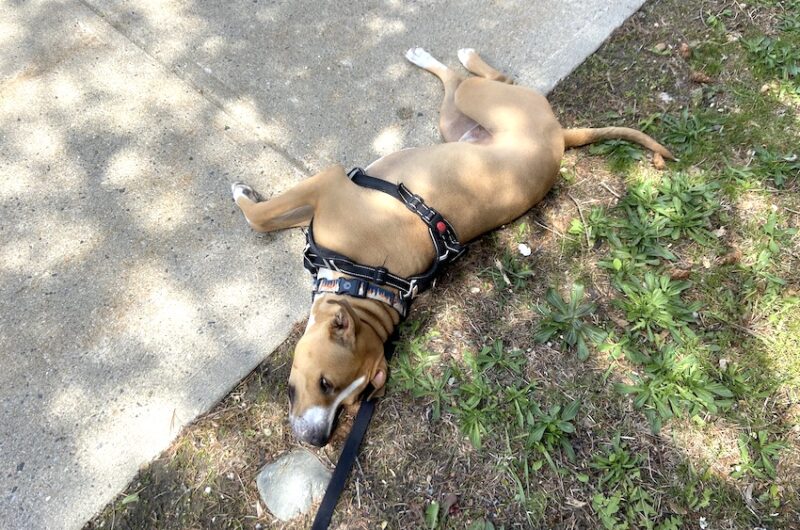
Sometimes, it’s just too hot or cold for your pooch to feel like walking anymore, causing him to stop dead in his tracks. My pooch Remy is especially guilty of this issue!
Remy will frequently shut things down when he finds a cool and shady spot. Sometimes, he just needs a break! When he plops down, it signals to me that it’s just too hot out for my guy.
So, keep the climate in mind when trying to walk your canine.
Some dogs have different heat tolerances than others, so if your pup can’t handle higher temps, try to walk him late at night or early in the morning when it’s a bit cooler out.
You’ll also want to provide your dog with plenty of water, shade, and breaks to cool down. You may also want to fit him with a cooling vest for additional comfort.
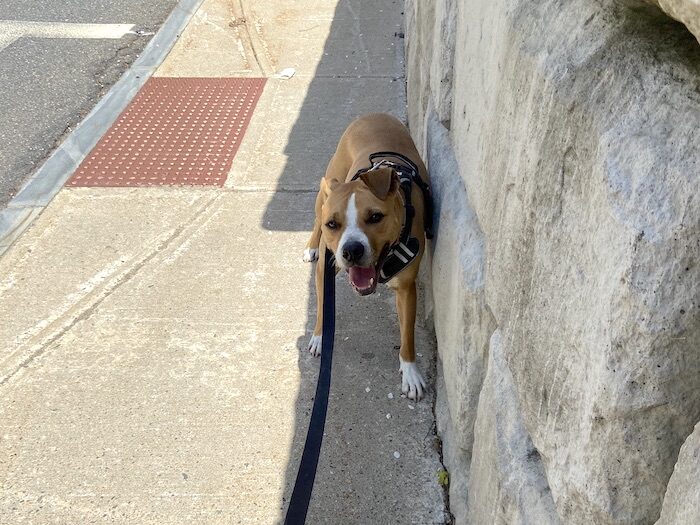
Mom, it’s too hot outside!
In cold seasons, make sure your dog has plenty of layers to keep him cozy. During this season, warmer parts of the day (usually the afternoon to early evening) are your best times for walks.
It’s also possible that the sidewalk is too hot or too cold for your pooch to enjoy your daily walk. If your dog seems troubled by the ground temperature, it might be a good idea to try out a pair of dog booties.
8. Your dog needs something from you.
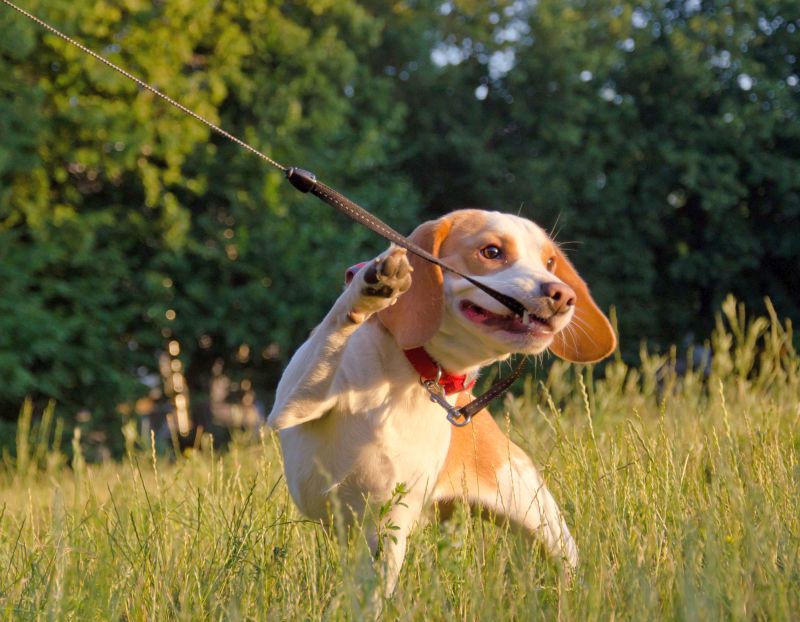
It’s possible that your buddy’s refusal to walk is his way of expressing general dissatisfaction with the walk. Maybe your dog wants to go in a different walking direction to check out his favorite park. Or perhaps he wants to visit his neighborhood dog friend a few houses down.
If you can entertain your dog’s wishes, there’s little reason not to. After all, this is your dog’s once chance to get out and about. If he wants to walk a certain direction towards his favorite sniff spot and time allows for it, go ahead and heed your dog’s request!
However, there may be some situations where you can fulfill your dog’s requests. Maybe you are on a time crunch, or maybe your dog is recovering from an injury and isn’t supposed to walk as far as he might normally.
In these cases, when your dog stops on the sidewalk, try your best to wait patiently without acknowledging his behavior change.
Eventually, your pooch should realize his tactics aren’t working and proceed to continue on your route.
9. Your dog’s gear is uncomfortable.
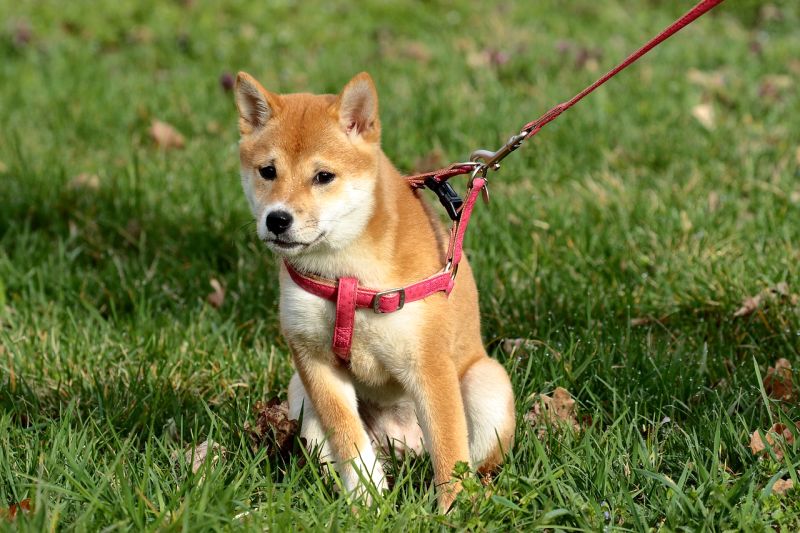
It’s possible that your dog is bringing a halt to your walks due to an uncomfortable piece of gear, like a new collar, leash, shoes, or harness.
Fortunately, this is usually a pretty easy fix: Just ensure that your doggo’s gear fits correctly. This means that everything should be secure but not too tight, and lightweight enough so that your furry friend can breathe and move around easily. It may not be easy to address this at the moment, but replacing poorly fitting garments is a pretty straightforward problem to solve.
You can also try to prevent this by noting your dog’s reactions to a new piece of clothing or gear.
If you notice chafing or marks on your dog’s body from the gear, consider opting for a more comfortable dog collar or supportive, padded dog harness that will let your dog walk comfortably.
10. Your dog doesn’t want the walk to end.
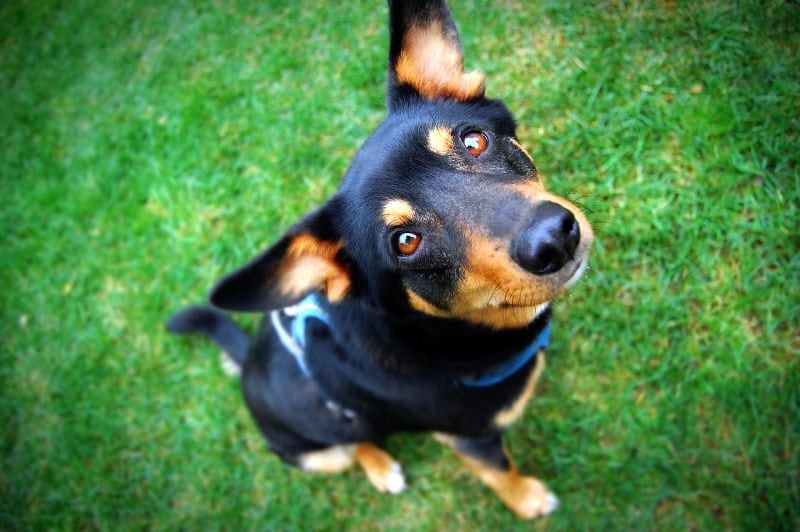
Does your dog seem to stop whenever you’re nearing the end of your walk? In this type of scenario, it’s possible your pooch just wants to avoid having to go back inside.
Walking, sniffing, and exploring are fun! Who wants to go back inside the boring house?
To curb this issue, make coming home exciting! Whether your dog gets a stuffed KONG after returning home from a successful walk or an engaging play session, find something that will make him happy to head home.
Note that you don’t want to lure your dog during walks with treats, since this may reinforce your dog’s tendency to stop during walks. If he’s rewarded for doing so, he may never stop! However, you can reward your dog for continuing to walk, marking and rewarding when your dog chooses to get up from a plop or if he keeps walking after hesitating.
You can also encourage your dog to run with you home in a high-pitched voice as he may find this more exciting.
11. Your dog needs more out of his walks.
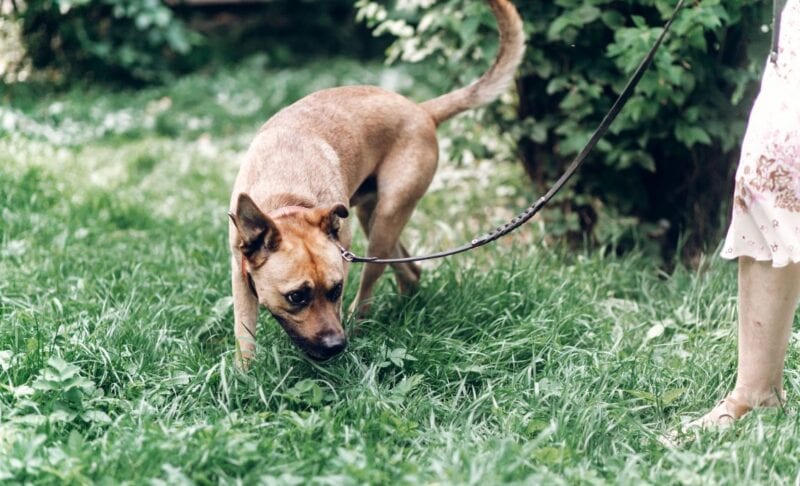
In some cases, the reason why your dog is so desperate to keep the walk going is that he needs more exercise than what he is getting. Make sure to talk to your vet or breeder (if you purchased your dog through a breeder) and ask what kind of exercise is needed given your dog’s breed and age.
Your dog’s refusal to end his walks may indicate that he is not getting the physical and mental stimulation he needs. Consider longer walks, or adding some challenge to boring normal walks by mixing in dog walking games like urban agility. You may even consider signing up your pooch for a dog sport that’s sure to burn physical and mental energy.
Also try incorporating sniff-based walks on a long leash, allowing your dog to sniff and smell to his heart’s content. Don’t forget to add in plenty of other enrichment activities to help tire out a smart, active pooch.
12. Your dog just doesn’t want to walk.
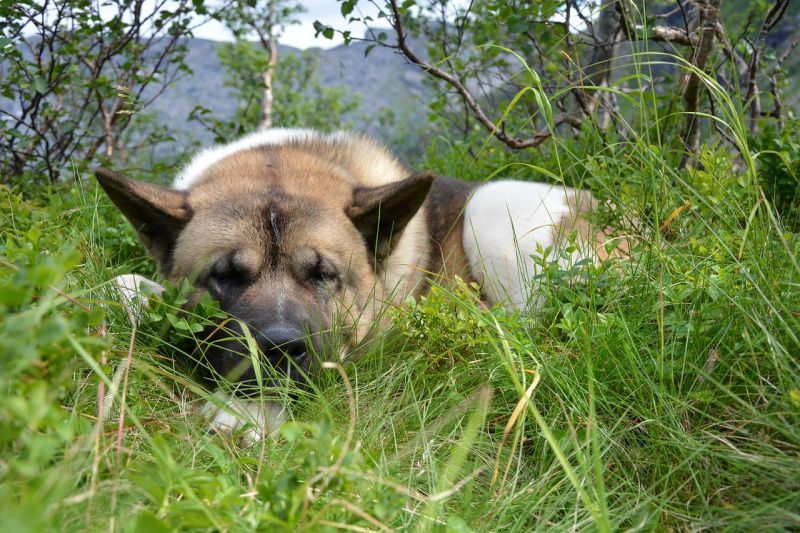
Sometimes, our pooches can be particular about their preferences — and these may not make sense to us. There isn’t always a rhyme or reason to Spot stopping in streets, nevertheless, it happens.
The important thing to note is that breaking this behavior almost always starts with having a plethora of patience for your pooch. You’ll need to give yourself plenty of time for your furry friend to get the message and make a habit out of walking properly.
When in doubt, work with a canine behaviorist to get to the bottom of your best buddy’s behavior.
Things You Should NEVER Do When Your Dog Stops Walking
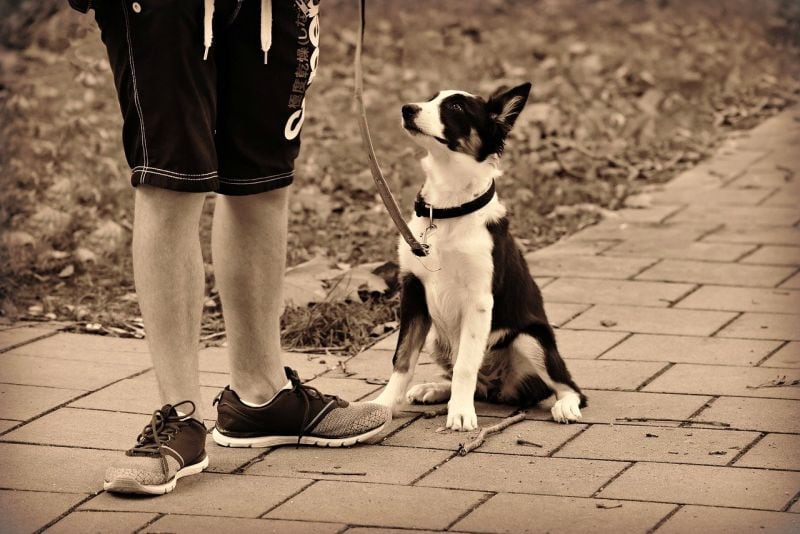
A halted hound can be incredibly maddening. However, there are a few things you should never do when your dog stops walking to keep your furry friend safe and avoid encouraging the undesired behavior.
- Avoid bribing your best buddy. While it may seem like the obvious choice to lure your furry friend with one of his favorite treats, this can make the issue worse. Your dog may learn to associate stopping on the sidewalk with earning a snack or two, so avoid this if at all possible. You can reward your dog for walking appropriatly by your side though. Consider marking and rewarding a hesitant walker every five steps, then every ten steps, then every block to help build their walking confidence.
- Don’t drag your dog. Dogs will often resist a force pulling towards the opposite direction, so dragging might make your pooch more determined to stay in place. Plus, you could potentially injure your dog by doing this. An escape-proof dog harness can be a helpful safety measure to stop a Houdini hound from making a quick getaway if they get startled, but definitely don’t use it to start dragging your dog around by force!
- You shouldn’t yell at your furry friend. Your dog is trying to communicate something, and while stopping in the street can be frustrating, you shouldn’t yell at your canine companion. The best way to get your pooch to walk with you is to earn his trust, and outwardly expressing your anger towards your dog will work against this.
- Don’t bite off more than you can chew. While you’re working through this issue with your dog, you’ll need to make sure you have plenty of time for unexpected holdups on your walks. For example, you wouldn’t want to go for a long walk when you’re pressed for time. This will frustrate you if he stops, which will be counterproductive.
- Don’t drop the leash and leave him. It’s never safe to leave your dog unattended in a public place, even if you’re sure he will eventually follow you home. Don’t drop the leash under any circumstances — it takes just one distraction to create an unforeseen life or death situation, so it’s simply not worth the risk.
- Do not punish your pooch. Your dog could be stopping on the sidewalk for a myriad of reasons. You’ll need to work with your pooch to determine the root cause of the issue, rather than punishing him for the undesired behavior. As pet parents, it’s our duty to be patient and understanding with our wonderful canine companions.
***
There are few things more frustrating than trying to walk a pooch that stays firmly planted in one place. However, by using some of the aforementioned strategies, hopefully you’ll be able to get your furry friend back into his groove.
Does your dog ever stop walking in the middle of the sidewalk? What strategies have worked best for you? We’d love to hear all about it in the comments below!
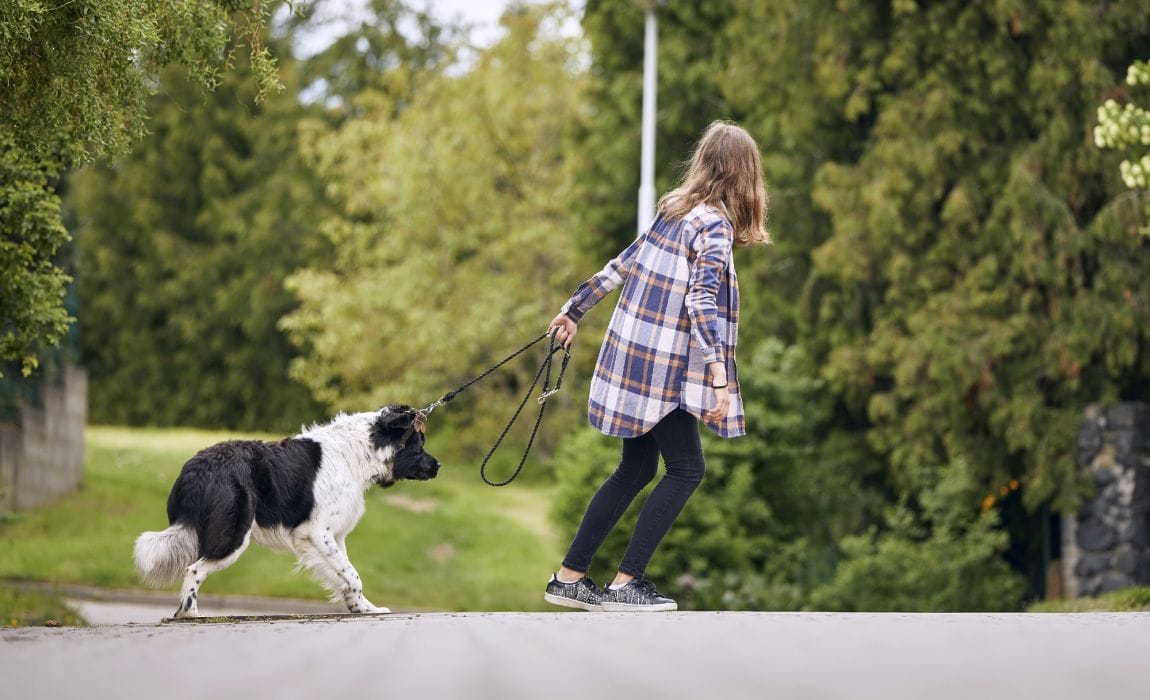

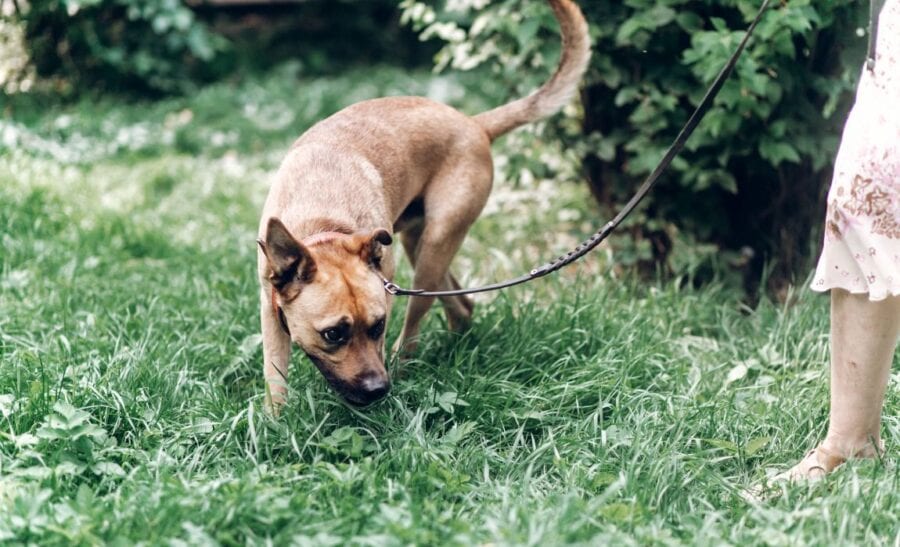


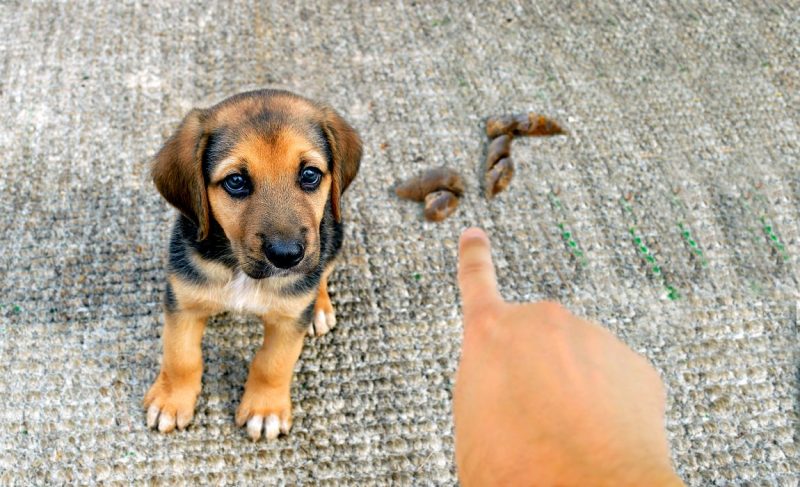
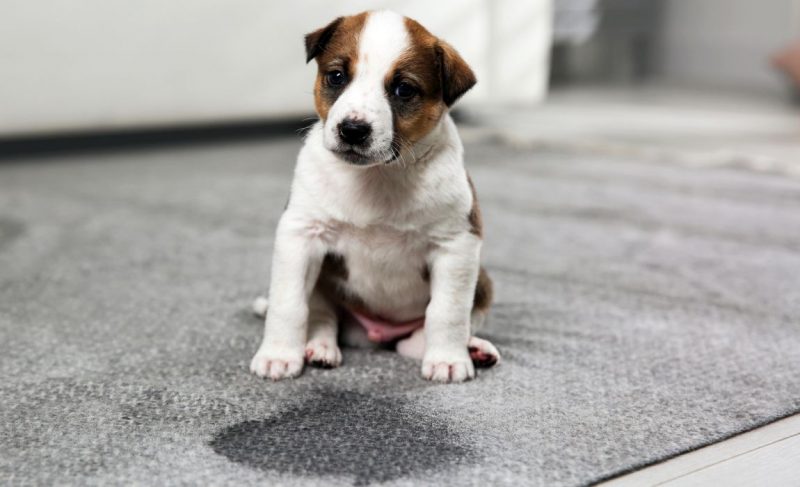
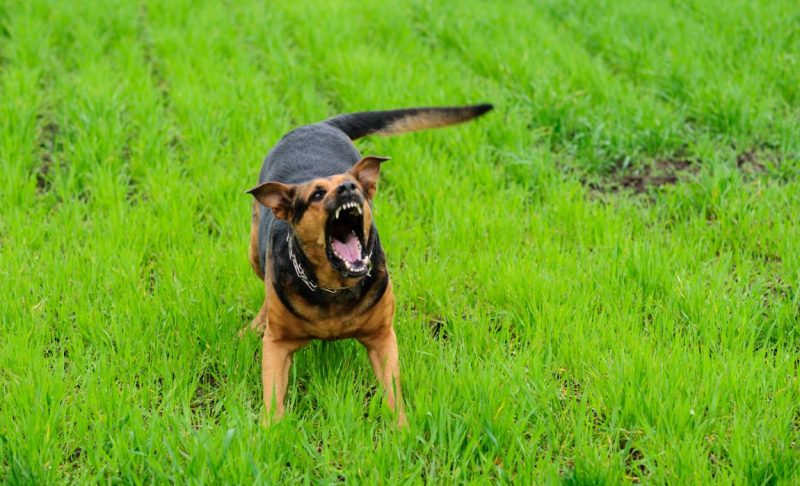
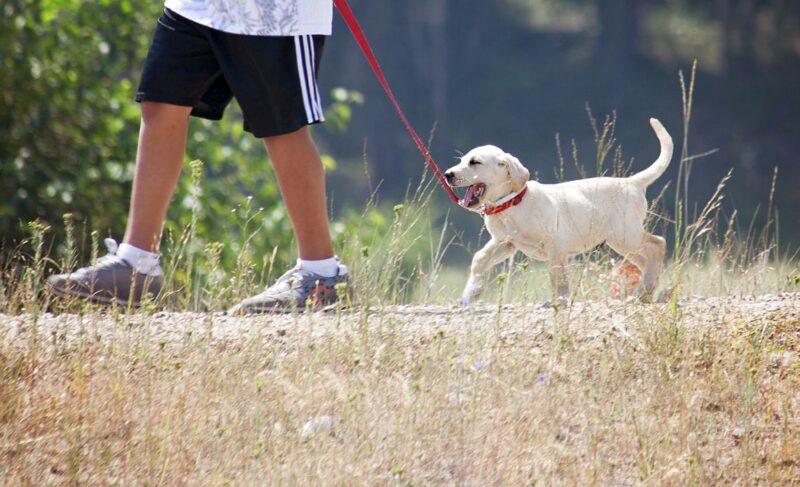
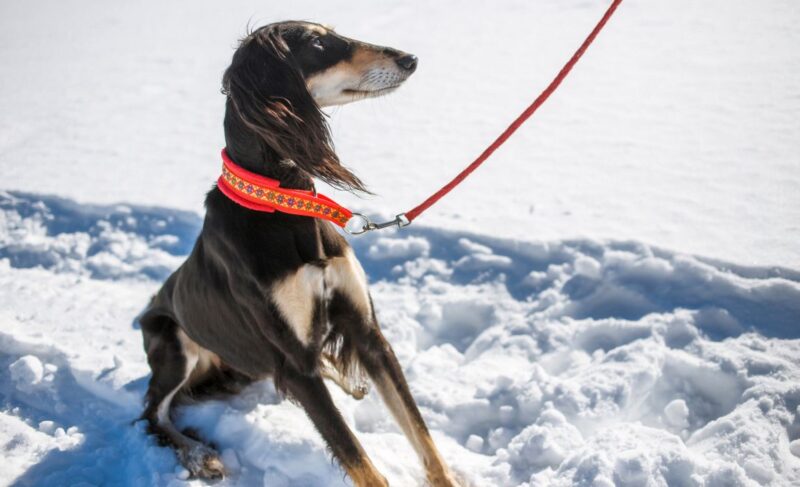
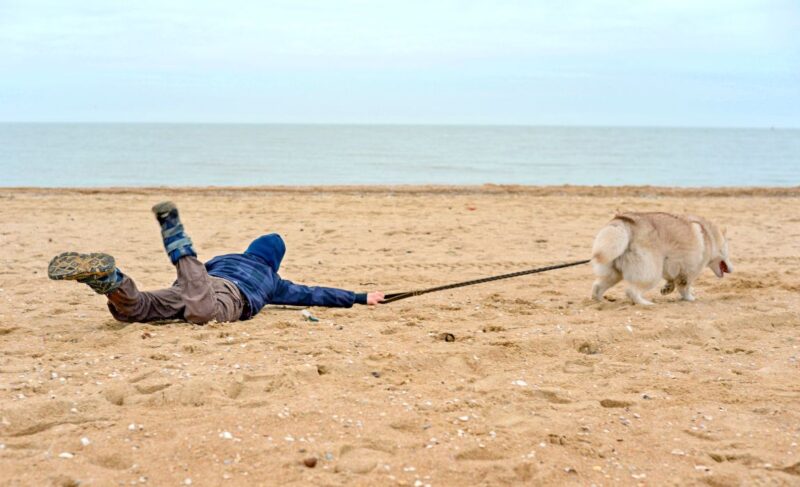
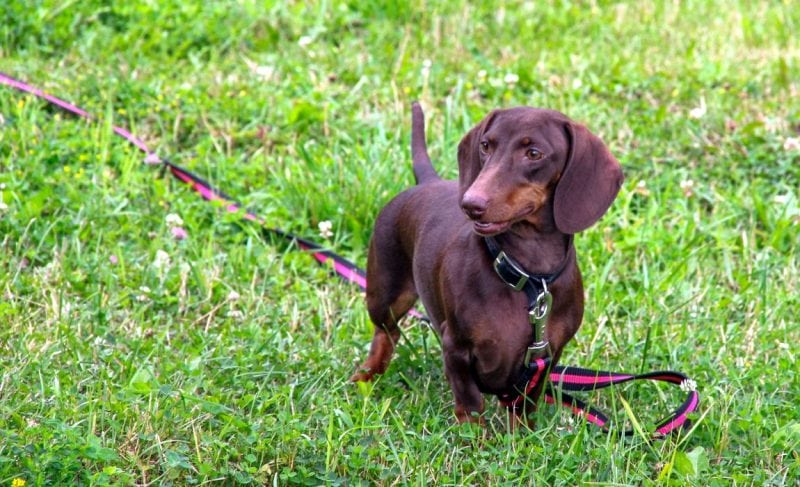

Leave a Comment